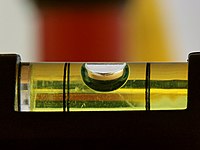
Photo from wikipedia
This article presents four different approaches utilized in beam tilting that are based on the phase gradient (phase shifting) surfaces. Each approach is individually analyzed and then compared to other… Click to show full abstract
This article presents four different approaches utilized in beam tilting that are based on the phase gradient (phase shifting) surfaces. Each approach is individually analyzed and then compared to other techniques. Beam tilting is obtained through various techniques by transforming the phase distribution of Fabry–Perot cavity antenna (FPCA) in the near-field region by means of inexpensive and passive surfaces including wedge-shaped dielectric lens (WSDL), discrete multilevel grating dielectric (DMGD), printed gradient surface (PGS), and perforated dielectric gradient surface (PDGS). To enhance efficiency in the millimeter-wave (MMW) band, the FPCA is fed through printed ridge gap waveguide. In addition, considerable enhancement in radiation performance of the antenna at 60 GHz is acquired by a partially reflective surface (PRS), including a gain enhancement from 6.5 to 22 dB. To validate the suggested methodology and performance of the designs, several prototypes are chosen for fabricating. A satisfactory agreement between the numerical results and experimental ones is achieved. The proposed designs are also applicable for MMW frequencies especially the narrower band communication system.
Journal Title: IEEE Transactions on Antennas and Propagation
Year Published: 2020
Link to full text (if available)
Share on Social Media: Sign Up to like & get
recommendations!